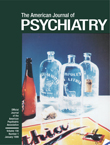Child and adolescent psychopharmacology is emerging from the dark ages, and one of the signs of renaissance or, perhaps, naissance is the increasing number of books on the subject. The book under review is the second edition of one of the original texts in the field, published in 1977 as Psychopharmacology in Childhood and Adolescence.
Dr. Wiener has assembled a group of experts who provide the reader with excellent literature reviews on the status of “Psychopharmacological Treatment in Autism” (Campbell and colleagues), “Schizophrenia” (Campbell and Armenteros), “Affective Disorders” (Kashani and Nair), “Attention Deficit Hyperactivity Disorder” (Rapoport and Castellanos), “Anxiety Disorders” (Popper and Gherardi), “Tic Disorders” (Towbin and Cohen), “Obsessive Compulsive Disorder” (Towbin), “Disorders of Conduct and Behavior” (Kruesi and Lelio), “Eating Disorders” (Hendren and Berenson), and “Elimination and Sleep Disorders” (Shaffer and Waslick). These are the chapters to which the clinician is likely to turn when wondering about the accumulated knowledge base for medication treatment of those disorders. There is an overall format addressing epidemiology, diagnosis, and psychopharmacology, including side effects and clinical use. Each is comprehensive without being labored. The downside of the comprehensiveness (and not the authors’ fault) is the fact that the references are in the text. For those of us with attention problems, it is distracting to plow through as many as four lines of names before picking up the thread of the sentence again.
In addition to the crux of the book, there are several chapters that are interesting reading in their own right, Dr. Wiener and colleagues have added to the section on history published in the original volume. We are sorry that Dr. Wiener did not reiterate the even earlier history of certain medications (e.g., the stimulants and tricyclics). Most of the readers are not likely to have Dr. Wiener’s earlier book or will have discarded it as outdated. Although our systematic information on many drugs was initially poor, clinical experience with certain medications stretches back for 40–50 years, and parents have found it reassuring to realize that experience goes back one to two generations.
“Methodological and Assessment Issues in Pediatric Psychopharmacology” by Drew Erhardt and Keith Conners is “must” reading independent of the specific psychopharmacology chapters, Most clinicians do research whether they know it or not. They develop a hypothesis about what is wrong with their patient and what should be done to treat the problem(s). They test their hypothesis by doing it. If they do not know how to think about the question, what to measure, and how to assess the results, they are going to be misguided in their conclusions.
Another “stand alone” chapter is “Developmental Considerations in Psychopharmacology: The Interaction of Drugs and Development” by Ted Shapiro. His presentation of the dilemma of the initiation of the pharmacotherapy and the difficulties one may encounter while making the decision to institute the medications is thought-provoking. Dr. Shapiro describes the factors to keep in mind and to explore before the initiation of the medication in a psychiatric patient, regardless of age. His treatment of the interaction of development with biology and psychopathology, the meaning of taking a drug or treatment, and the possible meaning of a placebo effect is particularly interesting and made lively by the inclusion of practical examples of the points being made.
In our view, this volume has two limitations. One is a criticism of the field; the other is a suggestion for future texts. The diagnosis of psychiatric disorders is more than reiterating DSM criteria. The APA books do an admirable job of that and even fill in some useful information about associated symptoms. The criteria designated in DSM were meant to provide the necessary, not the sufficient, characteristics of a disorder. It should be left to other texts to amplify those criteria and place them into the context of people who have the disorders. In this text, Dr. Popper’s chapter on anxiety disorders comes closest to really giving us a taste of the disorders and thereby their diagnostic aspects.
The second limitation has to do with the practical aspects of medication use. Knowing that 50 adolescents with condition X, for instance, responded to an average of 23 mg of drug Y and that this response was better than the response to placebo (60% versus 40%) does not tell most practitioners what they really want to know. For instance, When do you begin to see a response? What particular symptoms respond? Which side effects are time limited and which persist? Which are dose dependent? What drugs should be tried and in which order? (Drs. Kreusi and Lelio provide a nice algorithm in this respect for the treatment of aggression.) How long should the condition be treated? What is known of the long-term effects (e.g., longer than 1 year, longer than 5 years) of the drugs in adults, adolescents, and children? Realizing, of course, that most of this information simply is not known does not belie the fact that it should be addressed, and it should be addressed in the studies being published so that review texts like this one can include the information in their syntheses.
To conclude, this text is a good foundation and an excellent overview to bring the reader up to speed (as of 1996) on medications used in children and adolescents with major and well-delineated psychiatric disorders. Journal reviews thereafter will be necessary and, in a rapidly expanding field, no one should expect otherwise. On the other hand, with the exception of a couple of chapters, this is not a “how to” textbook and does not provide algorithms or ways of thinking about what to use when.

